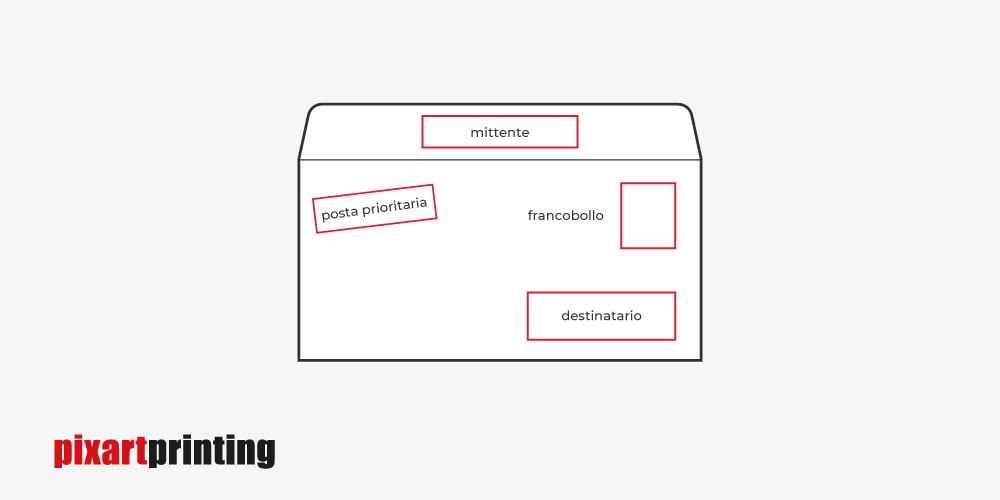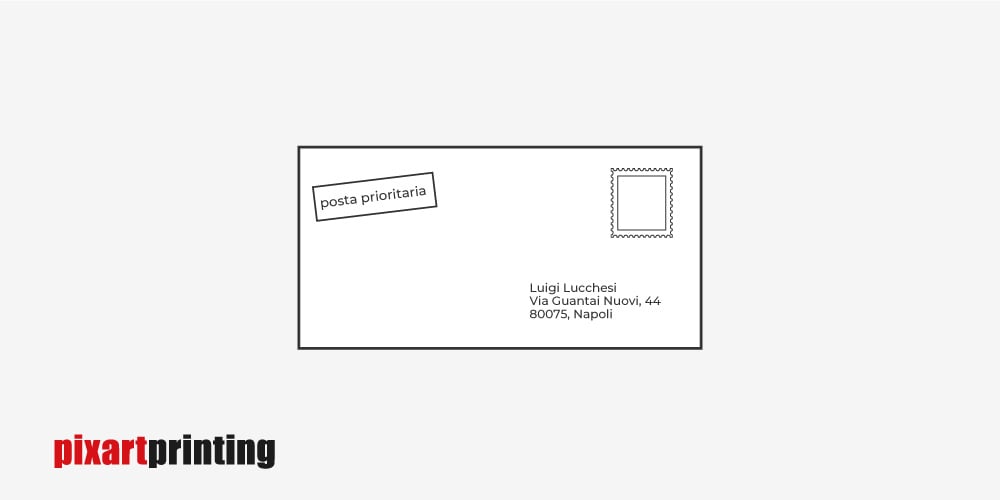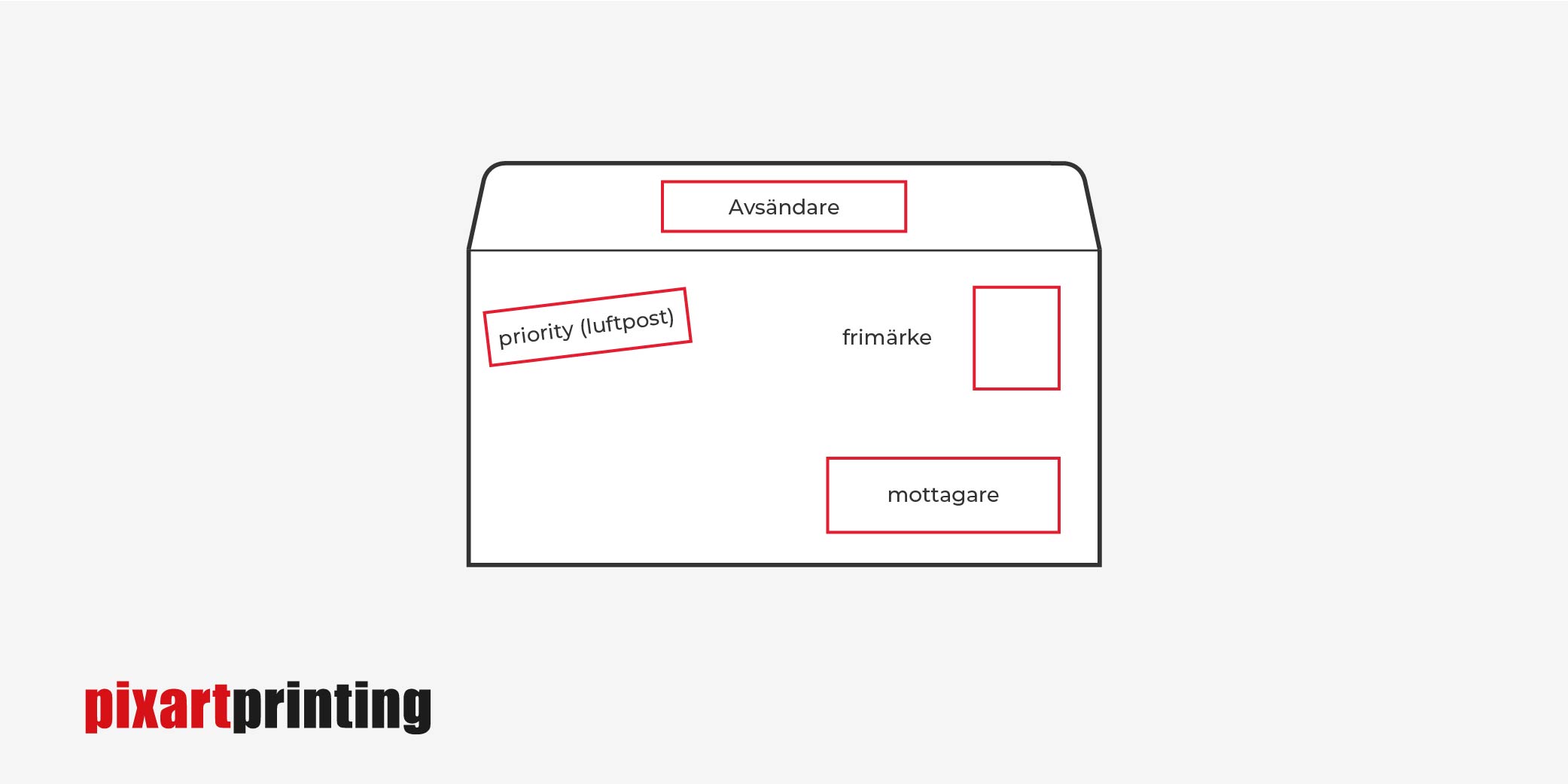How to fill out a letter envelope: info and practical directions
Sooner or later it happens to everyone: there is a paper letter envelope containing a communication to be mailed. Whatever the contents of the envelope, important or not, getting it to its destination requires that the front and back of the envelope be filled out properly and that the right stamp be applied to the letter envelope.
In this article we explain step by step and in a concise but detailed manner what data and information to transcribe on the letter envelope before mailing it and how to do it properly.
Let’s start right away.
The header of a letter envelope: sender and addressee
The header of a letter envelope is simple.
The details of the sender (the person sending the letter) and the addressee (the person who will receive the letter) must be clearly written on the letter envelope so that the postal service can deliver it.
The back side of the envelope (which should be sealed and glued) should have the sender’s information written on it, and the front side should have the addressee’s information written on it.
The letter envelope thus completed is ready to be mailed and posted.
But let’s take a closer look, with practical examples, at where and how these details should be entered.

Filling out a letter envelope: the back side
To fill out a letter envelope, data must be written on both sides of the envelope.
The back side of the envelope is the one that is to be closed and sealed, with the typical flap to be glued. Just on the surface of the flap should be written the address of the sender, that is, the person who wants to send the letter.
To complete the letter envelope, the sender’s address must include:
- First and last name of the person sending the letter
- Home address
- ZIP code
- Country and abbreviation of province
The sender’s address can be written all in one horizontal line, as you see in the image below.

Or you can write the sender’s address in three different lines, starting from top to bottom, as shown in the image below.

It is important to write the sender’s information without errors for two reasons.
The first reason is so that those who receive the letter can read them and immediately know who sent them the letter and where it came from.
The second reason is that if the postal service fails to deliver the letter to the addressee, it will deliver it back to the sender’s address.
Filling out a letter envelope: the front side
Once the back side of the envelope has been filled in with the sender’s information, the recipient’s information must be entered.
The recipient’s address should be written on the front side, in which the stamp should also be applied. To fill out a letter envelope correctly, the front side must mandatorily contain the following items:
- Postage stamp (applied to the upper right-hand corner)
- Priority mail stamp, if any (top left)
- Recipient’s full address (written in the lower right corner)
In the image below you see exactly where to put the stamp and where to write the recipient’s address on the envelope.

The recipient’s address should be as complete as possible and contain as much accurate information as possible to facilitate delivery of the letter.
For this reason, the addressee’s address can be more detailed and contain:
- Recipient’s first and last name
- Full address (street name, house number, zip code, place name, abbreviation of the province)
- State in which the recipient is located (if abroad)
- Headings and titles
- Additional directions (building name or number, interior, staircase)
- Telephone number
Classic header, titles and charges, confidentiality: to whom the letter is addressed
When compiling a letter envelope, it pays to properly use headers, courtesy formulas, and titles to write on the letter envelope.
These serve to make it clear to whom the letter is addressed, to do so appropriately, and to show the degree of officialdom and confidentiality of the correspondence.
Classic header
For letters sent to people other than family and friends, it is a good idea to have the header precede the recipient’s name. This is because we are addressing these people for reasons that may be business, employment, legal, bureaucratic etc.
Let’s look at some practical examples of headers.
When a company sends a letter and addresses one of its customers, it usually puts before the recipient’s name:
- Dear or Kind (if directed to a man or woman)
- Dear (if directed to a company)
This is the classic header, which by itself may be sufficient to “head” (i.e., assign ownership of the letter) to the recipient we are indicating in the envelope.
This standard header is sufficient to indicate to whom we are sending the letter.
Nevertheless, if we are sending the letter to a person who is titled, it is advisable to add the respective title or professional position that the recipient’s person holds. Especially if we are addressing him or her in a formal, professional capacity.
Titles and office of the recipient
In addition to the header, in fact, it is usual to specify the title held by the recipient, to better qualify him or her.
If the person holds several titles, it is a good rule to choose the most important one.
So we will have, in ascending order:
- Mr. or Mrs.
- Dr. (for Doctor and Doctoress)
- Notary, Lawyer, Engineer, Architect, Professor etc. (depending on the profession)
- Honorable (if the letter is addressed to a politician)
- Eminence or Excellency (if the letter is addressed to a religious authority)
A concrete example of header and title indication is:
Dear Lawyer Marco Rossi
Via Polenta n. 30, 39900
Verceto (TO)
Specify the degree of confidentiality of the letter
If the letter contains sensitive data or information confidential only to the addressee, it is a good idea to indicate this in the letter.
This is because, often, correspondence arrives in the hands of the recipient through other people.
That is why formulas are used:
- To the attention of
- C/O (which stands for “care of,” and means “delivery by care of.”)
These two formulas indicate a different degree of confidentiality of correspondence.
“For the attention of”: when the letter can be read by people other than the addressee.
It is used when sending a letter to a person who works for a company or institution.
The correspondence will be delivered to the company’s office and delivered to the recipient internally, by other people.
This formula is used when the contents of the letter are not personal in nature, and can therefore be read by other people before or besides the addressee.
In this case, before the recipient’s name will appear:
- Dear Company Fortunati S.p.a.
- To the attention of Attorney Mario Rossi
- Via Dei Prati 32, Trapani
- ZIP CODE 32000
- Building E
- Interior 4C
“C/O”: when the letter can only be read by the addressee.
This formula is used when sending a letter to a company or organization in which the addressee works or to a private residence where he or she resides, but without a specific private address or address in his or her name. If the nature of the letter is strictly personal and we want it to be read only by the addressee, we use “C/O” to formally specify this.
Even though the letter will be received and handled by other people, “C/O” indicates that only the addressee is authorized to open and read the envelope. Delivery of the unopened envelope will be by the person indicated immediately after the “C/O”.
In this case, among the addressee data we would write thus:
- Dear Lawyer Mario Rossi
- C/O Ditta Fortunati S.p.a.
- Via Dei Prati 32, Trapani
- ZIP CODE 32000
- Building C
- Interior 4C
Strictly Confidential
Should the letter envelope contain very personal or sensitive information, you may write, in the lower right-hand corner below the addressee’s address the abbreviation “strictly confidential” or “personal.”
This will make clear to anyone handling the letter its confidential nature and that it should not be opened or tampered with until it is delivered.
Purchase personalized business letter envelopes
Now that you have all the references for filling out a business letter envelope in its entirety, you can focus on the type of letter envelope to adopt.
If you are self-employed, an entrepreneur, or a business, you may want to send personalized letter envelopes that show your brand and logo clearly.
A personalized letter envelope immediately gives an idea of seriousness and trustworthiness on the one hand, and on the other hand allows you to immediately identify the sender of the letter.
To find out about the various types of commercial letter envelopes and the different ways to personalize them you can visit this page of our e-commerce.
You will be able to create and purchase your own personalized business envelopes in just a few clicks, to be used in many

